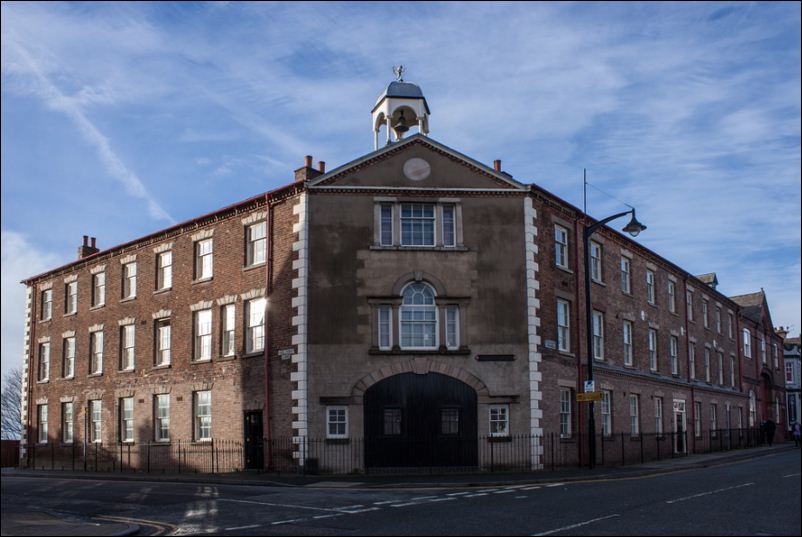| |
|
![]() back to Another 'Grand Tour' index
back to Another 'Grand Tour' index
Another 'Grand Tour' of the Potteries
- David Proudlove &
Steve Birks -
buildings in
Burslem
![]()
![]()
![]()
next: Burslem -St. Joseph's RC
Church
previous: Burslem -St. John's
Square
contents: index of buildings in Burslem
|
No 18 -
Burslem [ location map ] |
|
'In Praise of Conservation'
Baba Dioum
|

Enoch Wood’s former Fountain
Place Works, now Fountain Court
– a development by Staffordshire Housing Association
photo courtesy: Gary Sheldon
|
The decline and destruction of historic buildings across the Potteries has been a recurring and depressing theme for many years now, and it shows no sign of letting up.
Despite the almost wilful neglect of the city’s historic environment, there has also been some excellent examples of conservation-led regeneration, particularly in the Mother Town.
Over the past fifteen years or so, there has been much investment in the town’s historic fabric, with many fine projects delivered such as the refurbishment of the Liberal Club on Market Place. Arguably the finest scheme involved the refurbishment and adaptation of Enoch Wood’s former Fountain Place Works by Staffordshire Housing Association to create an excellent affordable housing scheme of 22 apartments.
Enoch Wood was one of the city’s most prominent potters in the late 1700s and early 1800s, and was once compared favourably with God. He also made significant contributions to the town’s civic life, and was a talented sculptor. He established his business in Burslem with his cousin Ralph Wood at the age of 24, and as Wedgwood wound down their operations in the Mother Town, rose to dominate the Burslem economy. Enoch Wood and Sons became renowned for earthenware at Fountain Place Works, and at its peak, 1,000 people were employed on the site.
Demolition of parts of the works saw various redevelopment proposals, such as the neighbouring NatWest Bank, and eventually just the main range was left. In 1951, Fountain Place Works became one of the city’s first Listed Buildings at Grade II, but eventually fell into lower value uses, disrepair, and saw the insertion of a hideous shop front as it became used as a warehouse. Staffordshire Housing Association acquired the site in the late 1990s and set about its restoration and conversion, and they did an excellent job, with residents moving in during 2000. It provides a simple template for the residential conversion of former potbanks, but one that isn’t often followed.
Conservation-led projects continue in Burslem, including the planned transformation of the Old Town Hall by the Haywood Academy, and the Prince’s Trust tackling the Wedgwood Memorial Institute. This is the good news. Wedgwood’s Big House is fast deteriorating, the Queen’s Theatre is facing an uncertain future, the St Modwen owned Hill Works seems to spontaneously combust on a regular basis, and I am simply amazed that buildings such as the Wedgwood Printing Works and the Central Hotel are still standing. More conservation is a must, but not to protect the buildings, but to breathe new life into them and set them free. And the resurgence of the Fountain Place Works provides a fine example of what can be achieved with care and vision.
Dave Proudlove - December 2014 |
![]()
![]()
![]()
next: Burslem -St. Joseph's RC
Church
previous: Burslem -St. John's
Square
contents: index of buildings in Burslem